Xiangfei Hu
IMAGINE-E: Image Generation Intelligence Evaluation of State-of-the-art Text-to-Image Models
Jan 23, 2025



Abstract:With the rapid development of diffusion models, text-to-image(T2I) models have made significant progress, showcasing impressive abilities in prompt following and image generation. Recently launched models such as FLUX.1 and Ideogram2.0, along with others like Dall-E3 and Stable Diffusion 3, have demonstrated exceptional performance across various complex tasks, raising questions about whether T2I models are moving towards general-purpose applicability. Beyond traditional image generation, these models exhibit capabilities across a range of fields, including controllable generation, image editing, video, audio, 3D, and motion generation, as well as computer vision tasks like semantic segmentation and depth estimation. However, current evaluation frameworks are insufficient to comprehensively assess these models' performance across expanding domains. To thoroughly evaluate these models, we developed the IMAGINE-E and tested six prominent models: FLUX.1, Ideogram2.0, Midjourney, Dall-E3, Stable Diffusion 3, and Jimeng. Our evaluation is divided into five key domains: structured output generation, realism, and physical consistency, specific domain generation, challenging scenario generation, and multi-style creation tasks. This comprehensive assessment highlights each model's strengths and limitations, particularly the outstanding performance of FLUX.1 and Ideogram2.0 in structured and specific domain tasks, underscoring the expanding applications and potential of T2I models as foundational AI tools. This study provides valuable insights into the current state and future trajectory of T2I models as they evolve towards general-purpose usability. Evaluation scripts will be released at https://github.com/jylei16/Imagine-e.
LLaMA-Adapter: Efficient Fine-tuning of Language Models with Zero-init Attention
Mar 28, 2023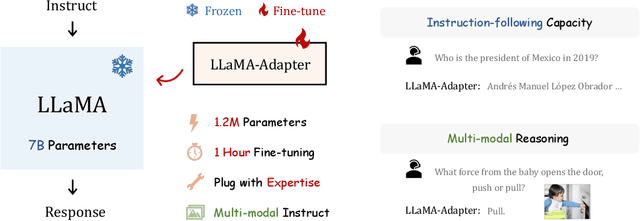
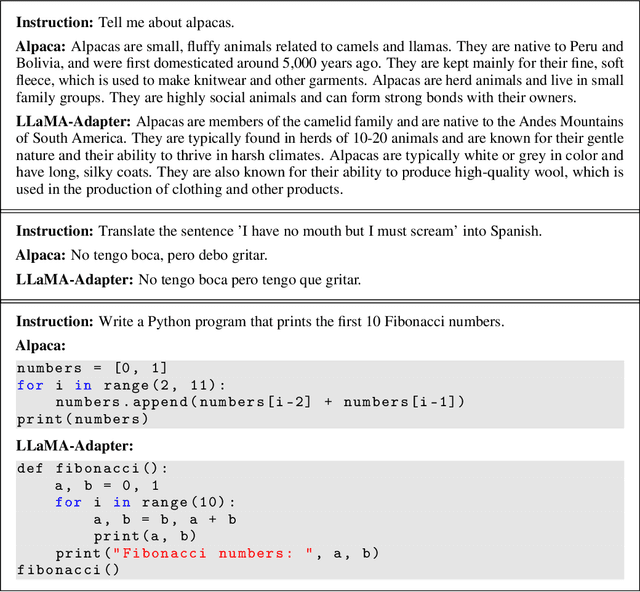

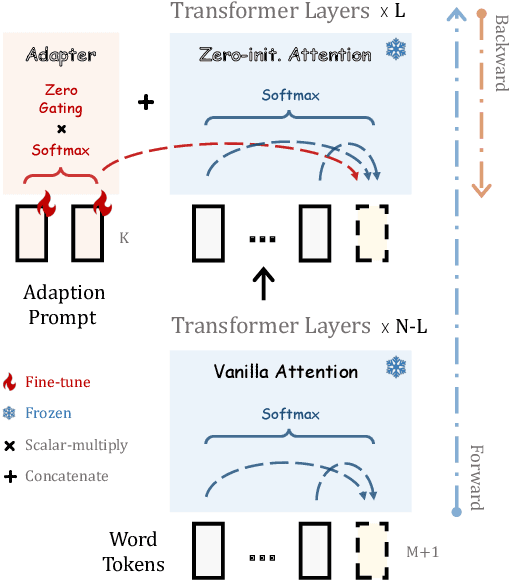
Abstract:We present LLaMA-Adapter, a lightweight adaption method to efficiently fine-tune LLaMA into an instruction-following model. Using 52K self-instruct demonstrations, LLaMA-Adapter only introduces 1.2M learnable parameters upon the frozen LLaMA 7B model, and costs less than one hour for fine-tuning on 8 A100 GPUs. Specifically, we adopt a set of learnable adaption prompts, and prepend them to the input text tokens at higher transformer layers. Then, a zero-init attention mechanism with zero gating is proposed, which adaptively injects the new instructional cues into LLaMA, while effectively preserves its pre-trained knowledge. With efficient training, LLaMA-Adapter generates high-quality responses, comparable to Alpaca with fully fine-tuned 7B parameters. Furthermore, our approach can be simply extended to multi-modal input, e.g., images, for image-conditioned LLaMA, which achieves superior reasoning capacity on ScienceQA. We release our code at https://github.com/ZrrSkywalker/LLaMA-Adapter.
Prompt, Generate, then Cache: Cascade of Foundation Models makes Strong Few-shot Learners
Mar 03, 2023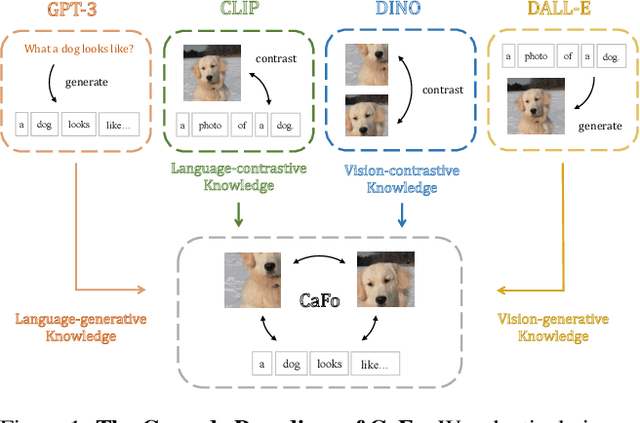
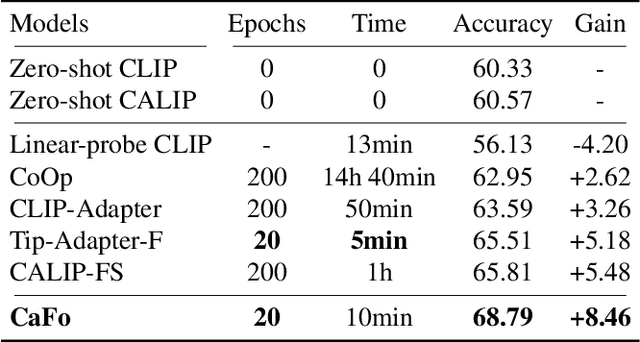
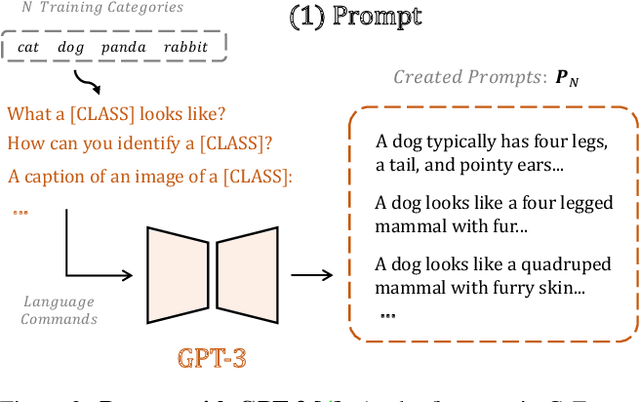
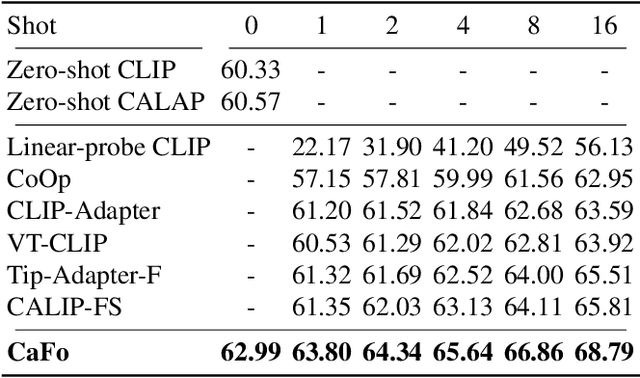
Abstract:Visual recognition in low-data regimes requires deep neural networks to learn generalized representations from limited training samples. Recently, CLIP-based methods have shown promising few-shot performance benefited from the contrastive language-image pre-training. We then question, if the more diverse pre-training knowledge can be cascaded to further assist few-shot representation learning. In this paper, we propose CaFo, a Cascade of Foundation models that incorporates diverse prior knowledge of various pre-training paradigms for better few-shot learning. Our CaFo incorporates CLIP's language-contrastive knowledge, DINO's vision-contrastive knowledge, DALL-E's vision-generative knowledge, and GPT-3's language-generative knowledge. Specifically, CaFo works by 'Prompt, Generate, then Cache'. Firstly, we leverage GPT-3 to produce textual inputs for prompting CLIP with rich downstream linguistic semantics. Then, we generate synthetic images via DALL-E to expand the few-shot training data without any manpower. At last, we introduce a learnable cache model to adaptively blend the predictions from CLIP and DINO. By such collaboration, CaFo can fully unleash the potential of different pre-training methods and unify them to perform state-of-the-art for few-shot classification. Code is available at https://github.com/ZrrSkywalker/CaFo.
 Add to Chrome
Add to Chrome Add to Firefox
Add to Firefox Add to Edge
Add to Edge